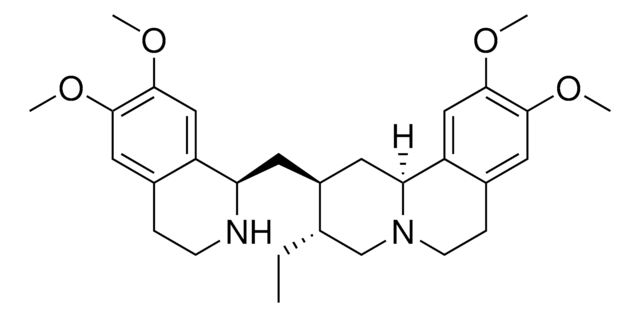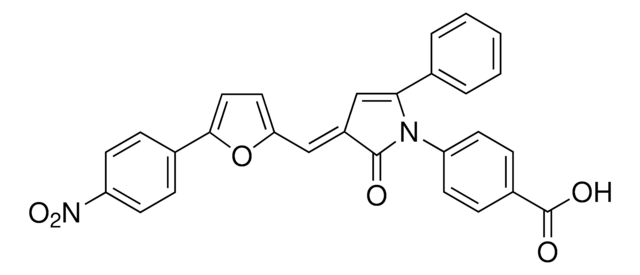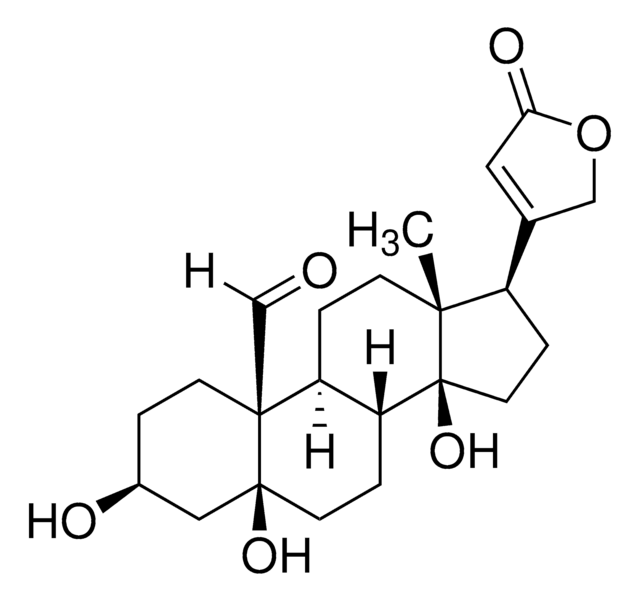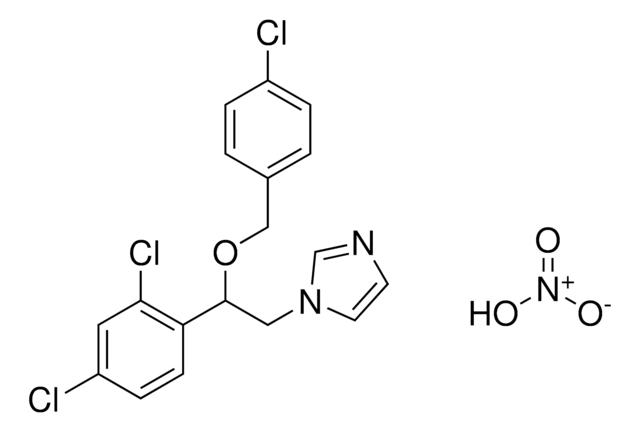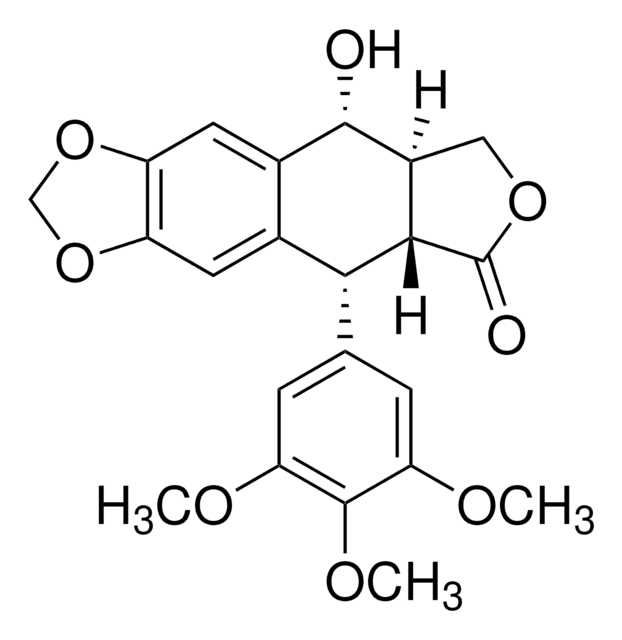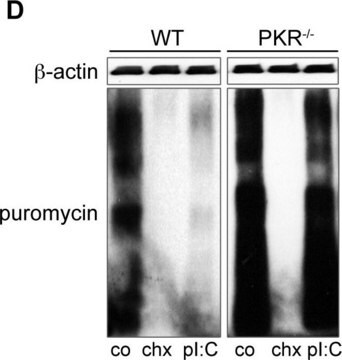E2375
Emetine dihydrochloride
Sinonimo/i:
6′,7′,10,11-Tetramethoxyemetan dihydrochloride
About This Item
Prodotti consigliati
Livello qualitativo
Spettro attività antibiotica
parasites
Modalità d’azione
protein synthesis | interferes
Temperatura di conservazione
2-8°C
Stringa SMILE
[H][C@@]12C[C@H](C[C@@]3([H])NCCC4=C3C=C(OC)C(OC)=C4)[C@@H](CC)CN1CCC5=C2C=C(OC)C(OC)=C5
InChI
1S/C29H40N2O4.2ClH/c1-6-18-17-31-10-8-20-14-27(33-3)29(35-5)16-23(20)25(31)12-21(18)11-24-22-15-28(34-4)26(32-2)13-19(22)7-9-30-24;;/h13-16,18,21,24-25,30H,6-12,17H2,1-5H3;2*1H/t18-,21-,24+,25-;;/m0../s1
JROGBPMEKVAPEH-GXGBFOEMSA-N
Cerchi prodotti simili? Visita Guida al confronto tra prodotti
Applicazioni
- as a protein synthesis inhibitor to study its effects on human papillomavirus type 8 E2 protein half-life
- to study its effects on the stress granules assembly
- as a chain-elongation inhibitor in puromycin assay for protein synthesis
Azioni biochim/fisiol
Caratteristiche e vantaggi
Avvertenze
Danger
Indicazioni di pericolo
Consigli di prudenza
Classi di pericolo
Acute Tox. 1 Oral - Eye Irrit. 2 - Skin Irrit. 2
Codice della classe di stoccaggio
6.1A - Combustible acute toxic Cat. 1 and 2 / very toxic hazardous materials
Classe di pericolosità dell'acqua (WGK)
WGK 3
Punto d’infiammabilità (°F)
Not applicable
Punto d’infiammabilità (°C)
Not applicable
Scegli una delle versioni più recenti:
Possiedi già questo prodotto?
I documenti relativi ai prodotti acquistati recentemente sono disponibili nell’Archivio dei documenti.
I clienti hanno visto anche
Il team dei nostri ricercatori vanta grande esperienza in tutte le aree della ricerca quali Life Science, scienza dei materiali, sintesi chimica, cromatografia, discipline analitiche, ecc..
Contatta l'Assistenza Tecnica.